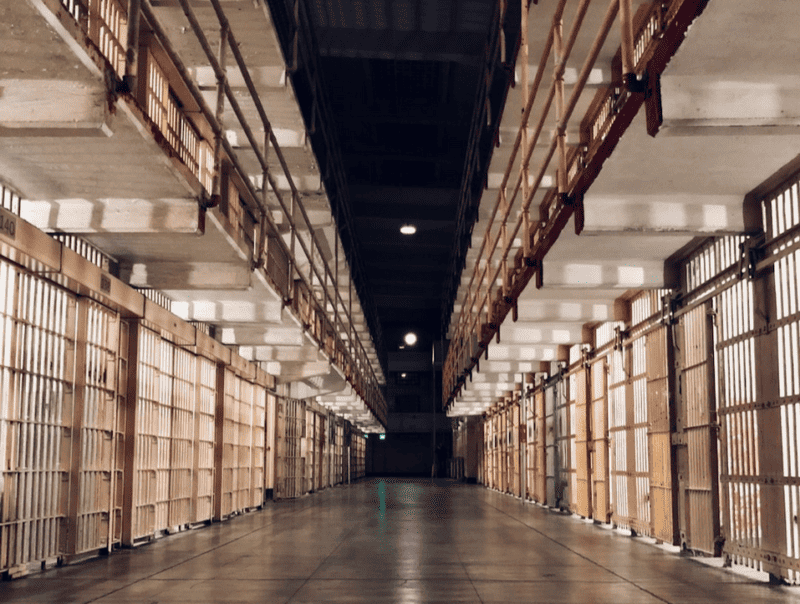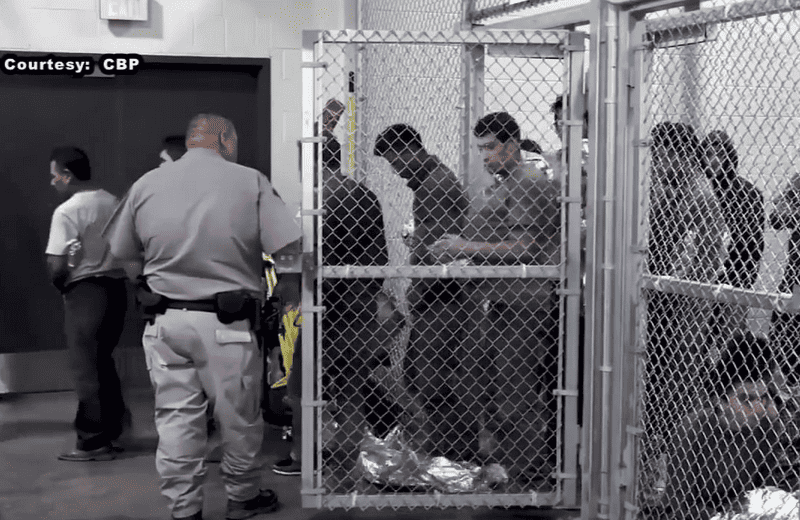A recent report released by Harvard University and Physicians for Human Rights (PHR) has brought to light a disturbing issue regarding over 640 immigrants held in detention in the Houston area. Migrant detainees have allegedly been placed in solitary confinement since 2018, raising significant human rights concerns.
The conditions under which they have been detained could potentially meet the criteria for torture as defined by the United Nations, according to a Houston Landing Story.
Solitary Confinement
Data collected from 125 Immigration and Customs Enforcement facilities beginning from September 2018 to September 2023 revealed that immigrants were put in solitary confinement for durations as long as 759 days, significantly surpassing the 15-day threshold specified by the United Nations for prolonged isolation.
Excessive isolation frequently resulted in instances of physical, psychological, and occasionally sexual attacks. The justifications for such prolonged solitary confinement varied, ranging from arbitrary measures to punitive actions, such as sharing a consensual gesture of affection, using profane language, or resisting compliance during routine bed checks.
Long-term solitary confinement is likely to cause mental and physical health risks, illnesses that are increasing nationwide including at Houston's biggest detention center, irrespective of the recommendations from ICE advising against frequent use of the procedure, as outlined in the report.
"There's a lot of research about how bad it is for one's physical and mental health, and there are almost always alternatives and particularly alternatives for using it for long periods of time," said Katherine Peeler, assistant professor of pediatrics at Harvard Medical School, PHR medical expert, and report co-author.
Peeler adds, "But particularly in immigration detention where the vast majority of people are detained administratively, using something like solitary confinement is unconscionable."
An ICE spokesperson was quoted as saying in the Houston Landing article. The agency is "firmly committed to the health, safety, and welfare of all those in our custody."
The agency employs a variety of oversight mechanisms to uphold compliance standards, such as conducting daily on-site reviews and carrying out regular inspections and audits by entities like the DHS Office of the Inspector General and other governmental bodies. Third-party audits are also utilized to guarantee objectivity and fairness in the oversight process.
"By undergoing these rigorous and layered channels of oversight, ICE is able to provide a high standard of care for the detained population and quickly identify and correct issues that might arise at any of its detention facilities," the spokesperson said.
Houston Facilities
Houston is home to four detention centers located within a 75-mile radius, accommodating a daily population of 3,751 as of January 2024, based on data from the Transactional Records Access Clearinghouse at Syracuse University.
Detainees held in these facilities include migrants apprehended by ICE during raids, or others detained following an unfavorable outcome in immigration court proceedings.
Authorities also transfer migrants to ICE custody from local jails. Once placed in ICE detention, they remain there until release on bond pending their court hearings, or granted permission to remain in the United States or face deportation - a process that may extend over several months or even years.
Houston's detention centers have come under scrutiny in the past for dangerous and unsanitary conditions, particularly in Montgomery ICE Processing Center and IAH Secure Adult Detention Facility. In 2021, these two facilities were among 39 that the ACLU demanded that the Department of Homeland Security shut down.
Migrants Unable to Flush Toilets
The 26 immigrants interviewed for the report described being subject to harsh and unsanitary conditions while in solitary. Some had to sleep with the lights on. Others couldn't flush their toilet. The isolation took a physical and mental toll, particularly when it extended for prolonged periods.
"People described feeling isolated and lonely, depressed and anxious," said Peeler. "There were a lot of small indignities that occurred. People described having no control over their surroundings."
Of the four detention centers in the Houston area, cases of solitary confinement were overwhelmingly concentrated at the Montgomery County ICE Processing Center. A total of 542 cases were reported there during the five years of the study.
"The extent of the use of solitary confinement at Montgomery ICE Processing Center is shocking, but not surprising, given the history of other abuses reported at the facility," said Eunice Cho, senior staff attorney with the ACLU National Prison Project, in a statement to the Houston Landing.
ICE SUED
The organization sued ICE in 2020 to release vulnerable immigrants from the Montgomery detention center during the first months of COVID-19, Houston Landing reporter Anna-Catherine Brigida wrote in her article.
"Solitary confinement is a dangerous practice that can cause permanent harm," she added.
The use of solitary confinement is on the rise at the Montgomery detention center, with 210 cases reported in 2023, compared to 109 the year before.
"It's the lack of effective oversight and complete lack of accountability causing the increase," said Tessa Wilson, senior program officer for PHR's Asylum Program and one of the report authors.
Researchers were alarmed not only by the frequency of solitary confinement placements but also by the length of the stays.
In the longest recorded case in the Houston area, one immigrant from the Democratic Republic of Congo was held in solitary in the Montgomery ICE Processing Center for 427 days until his release in May 2023. The agency listed the case as "detainee requested" for "protective custody."
In another case at the same detention center, a man from Jamaica was placed in solitary confinement for a year for behavior-related issues. Another man from Honduras told researchers that his isolation at the facility was retaliatory for speaking up about poor conditions.
"He's specifically mentioned that the warden there told him that he wouldn't be getting out of solitary because he had instigated various protests and complaints," said Peeler. The man reported developing anxiety and depression during his months in isolation.
GEO Group, the private prison company that runs the Montgomery ICE Processing Center, said that it follows national standards set by the Department of Homeland Security.
"Under no circumstances is an assignment in a special management unit used in a retaliatory manner or without careful adherence to the performance-based national detention standards and the ICE notification procedure," said a GEO Group spokesperson.
Confinement Decrease
The report shows that the use of solitary confinement decreased at two Houston-area detention centers, Houston Contract Detention Facility, and IAH Secure Adult Processing Facility, to zero cases in 2023. Joe Corley ICE Processing Center registered two cases in 2023, and five total since 2018.
Brian Todd, a spokesperson for CoreCivic, the private prison company that runs Houston Contract Detention Facility, challenged the use of the term solitary confinement to describe segregated conditions and said solitary confinement "does not exist at Houston Contract Detention Facility (HCDF) or any facility that CoreCivic operates." CoreCivic is located at 15850 Plaza Drive.
"We have restrictive housing units (RHU), and these are designated for medical and mental health observation rather than discipline, protective custody, or administrative/investigative purposes," Todd said. "RHU detainees still have full access to courts, visitation, mail, meals, all medical facilities, and recreation. We strive to ensure detainees are cared for in the least restrictive environment necessary to maintain the safety and security of the institution."
Arevik Avedian, a report author and the director of empirical research services at Harvard Law School, emphasized the limitations of the data disclosed in the report due to variances in record-keeping across different ICE facilities.
She stressed that the information should be viewed as a part of the overall picture rather than the complete narrative. The report recommends that ICE enforce a formal directive to terminate the use of solitary confinement, enhance transparency in reporting such practices, and enforce more rigorous compliance with guidelines by facilities and private contractors.
"There is already overwhelming support for ending the use of solitary confinement in general, and President Biden himself even said it in his 2020 campaign," said Wilson. "There should be no reason why it shouldn't be a priority for ICE as well."
Clarence Walker can be reached at [email protected]



